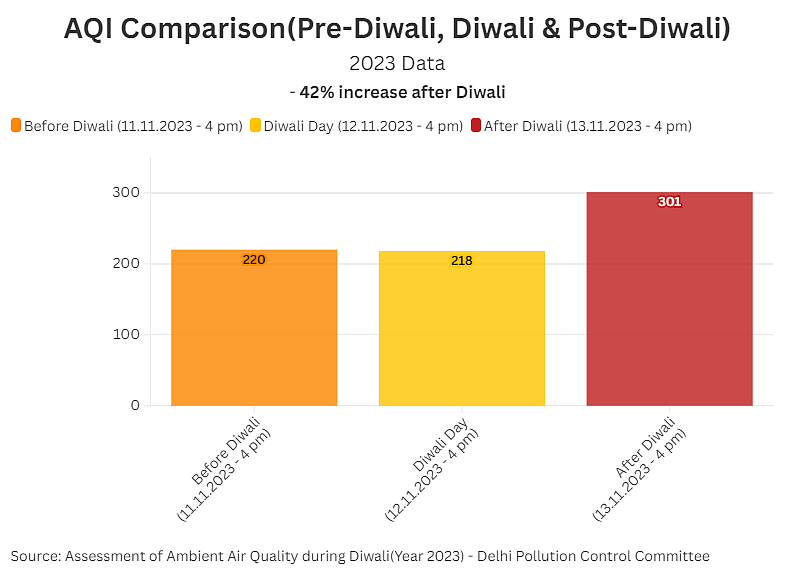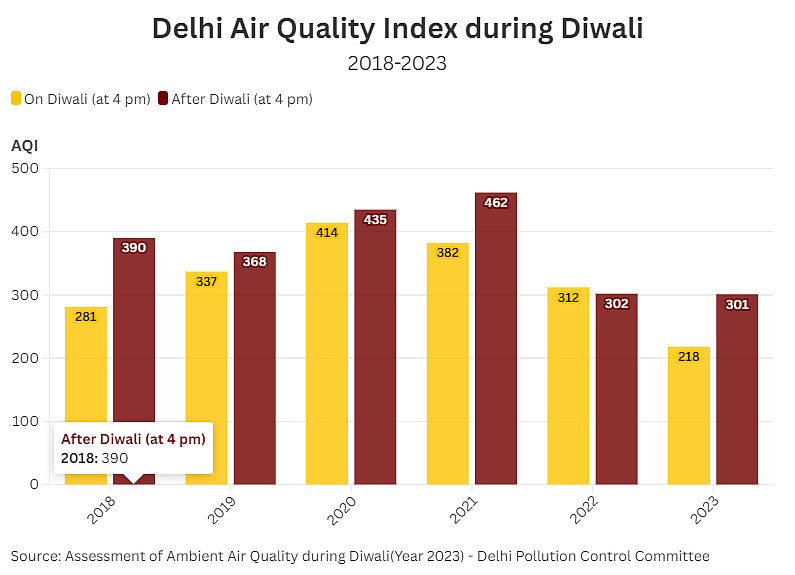Diwali morning in Delhi continued to be hazy with air quality in the city’s Anand Vihar area slipping into “severe” category. The pollution levels are further expected to go up on Thursday evening despite strict government regulations on the use of firecrackers and curbs on construction activities, among others.
On November 29th (Tuesday) and November 30th (Wednesday), the air quality in the national capital remained poor ahead of the Diwali celebrations with an AQI of 268 and 307, recorded respectively. Meanwhile, the ban on firecrackers in the national capital has been strengthened with over 350 monitoring teams deployed to take evasive action. With air pollution being an annual occurrence in Delhi now, the air quality condition continues to worsen further with the onset of the Diwali week.
Advertisement
What Data across the Years Say
Despite the ban on firecrackers in the city during Diwali over the last few years, data shows that there has been a significant rise in PM 2.5 levels due to the firecrackers. A look at the AQI levels in Delhi before Diwali, on the day of Diwali, and the day after gives an idea of the stark rise recorded last year. According to the data published by Delhi Pollution Control Committee (DPCC), there was a 42% increase in the AQI levels after Diwali last year. Numbers show that a day before the festival the AQI was recorded at 220, as compared to 218 on the day of the festival. However, on the day after Diwali, the AQI levels were seen shooting up to 301.
Advertisement

The toxic air levels reached the highest in 2021 with the AQI reaching 462. A careful study of the air quality index from 2018 to 2023 shows that there has been just 0.3 per cent reduction in the AQI levels in 2023, as compared to 2022. However, the percentage reduction of the air quality levels from 2023 to 2021 has been 35%.

As the Diwali celebrations commence, the air quality levels are also expected to further worsen, as indicated by the data from the last few years. Despite ambitious steps taken by the Government to combat air pollution, the issue of suspended air particles seems to persist among the residents of Delhi- NCR. AQI levels from November 1 will further reveal the air quality conditions this year and whether the air quality management programmes have been able to make an impact or not.
















 Just one email a week
Just one email a week